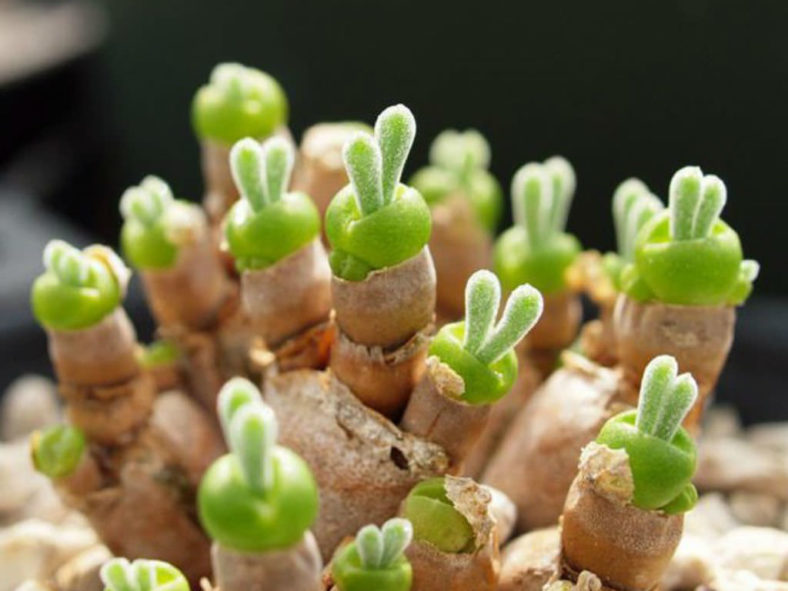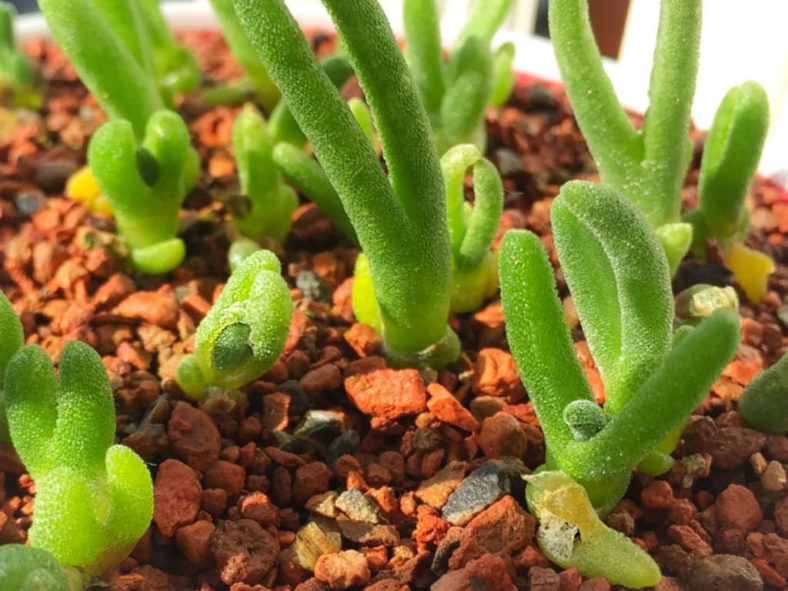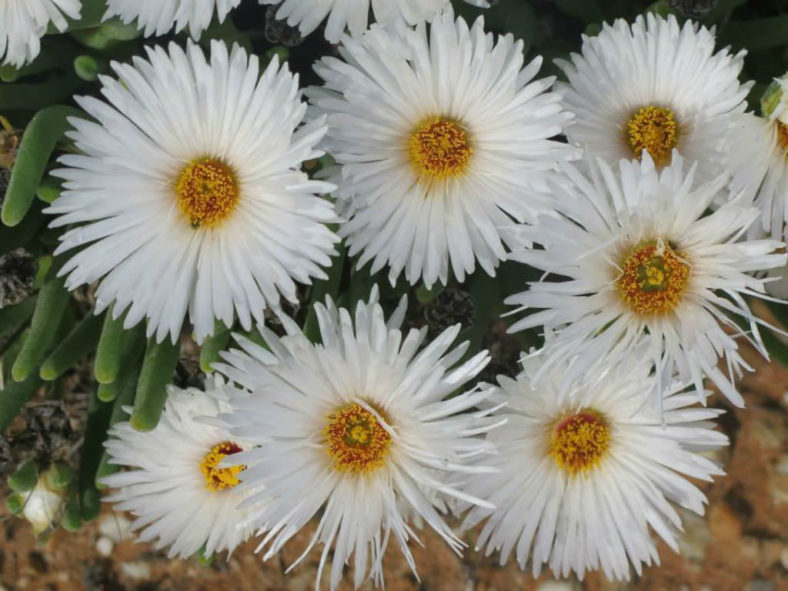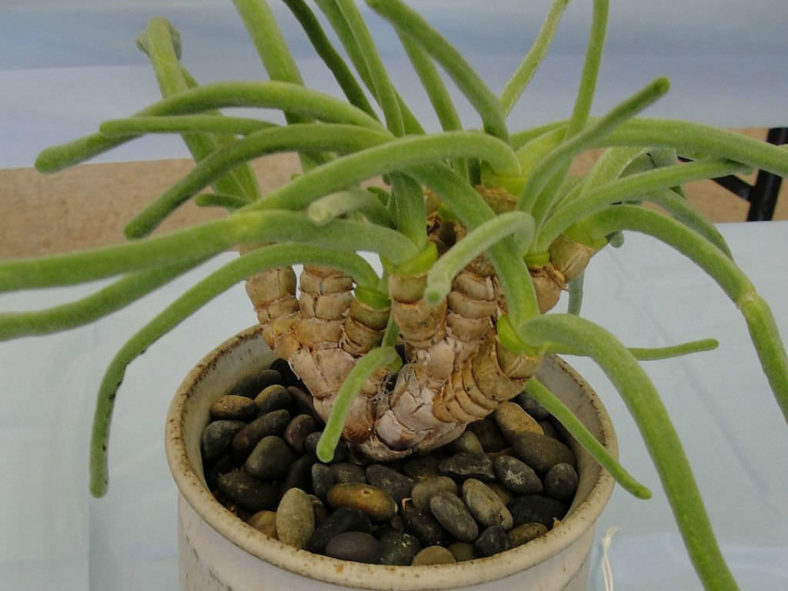Scientific Name
Monilaria moniliformis Ihlenf. & Joergens.
Common Name(s)
Bunny Succulent, Bunny Ear Succulent, String of Pearls, Beaded Vygie, Beaded Ice Plant
Synonym(s)
Conophyllum moniliforme, Mesembryanthemum moniliforme, Mitrophyllum moniliforme, Schwantesia moniliformis
Scientific Classification
Family: Aizoaceae
Subfamily: Ruschioideae
Genus: Monilaria
Etymology
The generic epithet "moniliformis (pronounced mon-il-lee-FOR-mis)" means "resembling beads on a string or necklace" and refers to the barrel-shaped internodes of this species.
Origin
Monilaria moniliformis is native to South Africa. It grows in quartz patches from Vanrhynsdorp to Klawer in the Western Cape province.
Description
Monilaria moniliformis is a beautiful, small, sparsely branched succulent shrub with soft, barrel-shaped internodes and very soft, cylindrical, short-lived leaves arranged in pairs. It can grow up to 5.4 inches (12 cm) tall. The internodes are covered with terminal sclerotic sheaths and can measure up to 0.5 inches (1.2 cm) in length and nearly equal in diameter. The leaves can reach 4 inches (10 cm) in length and 0.2 inches (0.5 cm) in diameter. This plant is a winter grower, and its leaves disappear in summer.
The solitary flowers are white with a yellow center and appear in fall and winter, with pedicels up to 4 inches (10 cm) long. They can reach a diameter of 1.6 inches (4 cm).

How to Grow and Care for Monilaria moniliformis
Hardiness: USDA hardiness zones 10a to 11b: from 30°F (-1.1°C) to 50°F (10°C).
Mesembs are primarily adapted to relatively predictable rainfall patterns rather than extreme drought and irregular rainfall. Total rainfall may be extremely low, but water is available at least seasonally or through fog and condensation. This leads to or allows plants that are not especially large, sometimes very small, and affects how they need to be treated in cultivation.
The basics of care are simple: free-draining soil, plenty of sun and ventilation, and regular light watering in the right season. The difficulties are endless, trying to adapt to the Mesembs' adaptability and follow their growth habits in your particular conditions.
These plants require a loam-based compost with extra drainage material such as horticultural grit or perlite. They all like good light conditions and plenty of ventilation.
Some are relatively cold-hardy and can even survive mild winters outside. Most will survive temperatures down to the freezing point. Some Mesembs begin to grow in the fall as temperatures drop and days get shorter.
Learn more at How to Grow and Care for Mesembs.
Links
- Back to genus Monilaria
- Succupedia: Browse succulents by Scientific Name, Common Name, Genus, Family, USDA Hardiness Zone, Origin, or cacti by Genus
Photo Gallery
Click on a photo to see a larger version.


